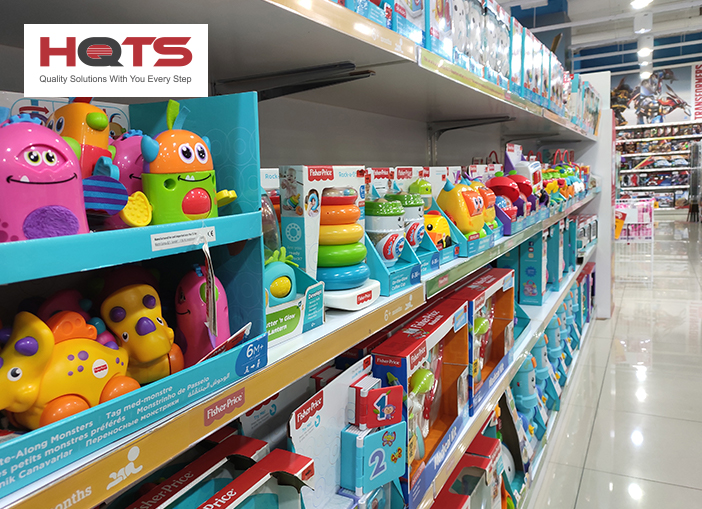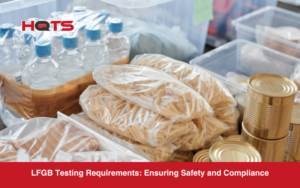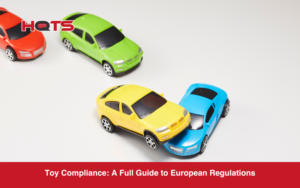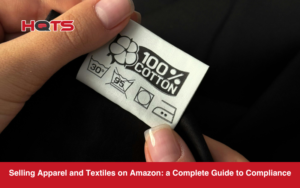The toy industry is highly competitive – and manufacturers distinguish themselves from others through the toy packaging. But when it comes to the packaging, businesses must comply with a series of toy packaging requirements and safety standards. This guide will go through all the main packaging requirements for toys.
Why Are There Toy Packaging Requirements and Safety Standards?
Play time should be as fun as possible, and toys and children’s products are instrumental to those cherished moments. But the packaging is just as important. Several safety risks are associated with the packaging for toys, including choking and cutting hazards, to the product being harmed under harsh shipping conditions.
As such, companies in the industry need to follow specific standards and packaging requirements, including accurate toy labeling information and child-resistant packaging. Kids, by nature, are curious and like to touch and feel their way around and hold new things. For those reasons, the children’s products’ packaging regulations must be followed to ensure kids remain safe.
What Are the Common Toy Labelling Requirements?
There are a series of toy labeling requirements. For instance. children’s products intended to be used by children aged 12 and under must have distinguishing permanent markings that are clear and visible. These labels must be included with the product, visible on the packaging, and provide certain toy packaging information.
Another toy labeling requirement is that all toys sold in Europe must meet the legal requirements set out in the toy directive and carry the CE mark as a toy packaging symbol in a visible and legible position. General areas of concern for stuffed toys include the potential separation of small parts, such as animal eyes, which could pose a choking hazard.
The standard toy packaging information includes:
- The manufacturer or private labeler name.
- The location and date of production of the product.
- A detailed toy labeling information on the manufacturing process, such as the batch number and other identifying characteristics
- Any other relevant packaging information to identify the whereabouts of the specific source of the product.
How to Pack Toys for Shipping?
Many retailers have their own methods for how products should be packaged. However, manufacturers often pay a lot of attention to the product quality and less attention to the packaging. While in fact, it is often the cause when a product is damaged or delayed during transit. The customer may rip apart and discard the packaging as soon as they receive the product. But to ensure top-quality safety, you must perform a packaging inspection check, including:
- Verifying package assortment and quantities – Most small products are packed in large shipping containers. Ensuring that the right amount of units is delivered in each Stock Keeping Unit (SKU) is vital when managing inventory. If you leave this process unchecked, it can result in items being delivered to customers in the wrong quantities resulting in disappointing customer reviews.
- Check the sealing method and packaging materials – Temperature changes and rough handling could threaten the integrity of your packaging. It’s important the supplier packaged the product accordingly to ensure the packaged toy goods transit correctly and most safely.
- Check shipping markings and barcodes – It is important that the barcodes and carton markings of the toy packaging are correct and the labeling follows the CPSIA labeling requirements. Inspectors can help to check markings and barcodes with fundamental equipment.
- Carton drop test – The shipping and handling may cause stress to products, which could cause product damage and, therefore, result in customer returns or refusal. A carton ISTA 1a drop test is a basic on-site test that inspectors can carry out on most packaged products.
- Compliance – Overpacked warehouses can cause issues for inspection purposes, and as we shift towards eCommerce, this has led to reduced inventories. Therefore, retailers now hold their suppliers more accountable for meeting packaging requirements.
What Is a Toy Safety Standard?
A toy safety standard is a set of rules/guidelines designed to protect children from dangerous toys. There are many different standards across the industry and country/regions.
For example, in the United Kingdom, all toys must meet an essential list of safety requirements in the Toy Safety Regulations of 2011. The toys must also meet other legislations, including Persistent Organic Pollutants Regulations, REACH, and the UKCA marking.
The benefit of the UKCA marking is to show the authorities that the toy complies with the UK regulations, has the correct safety requirements, and can be sold within the country. Similarly, the EU has since many years enacted a law to ensure toys sold in Europe are of high quality and/or safe when they’ve passed the toy safety standard EN71 test and marked with a CE label.
Note that the EN71 toy safety standard covers all toys for children up to the age of 14. The legislation comprises six parts and covers safety aspects, including flammability, toxicity, and safety marketing.
Other Toy Packages Information
There are a series of other factors you should be considering when it comes to children’s products packaging, including:
- Pick the right materials for the packaging.
- Ensure the packaging is functional.
- The design of kids’ toy packaging design is appealing.
Aside from the above-mentioned points, there are challenges when designing packages for toys, and they need to address three significant factors – material, function, and messages. You must ensure the suitable material is chosen and conveys the appropriate message to the correct target audience.
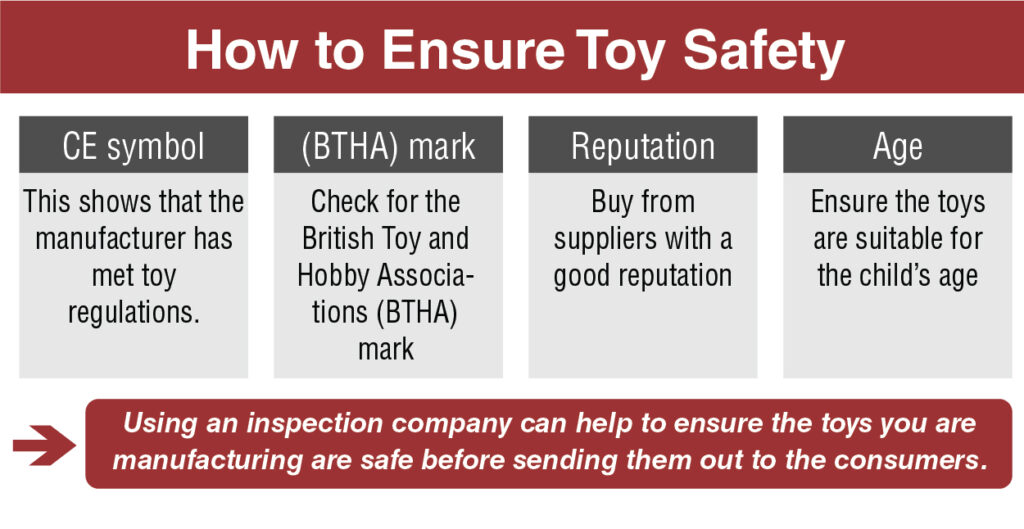
Toy Packaging Materials
The cost, printing, customization, and capability are all important when choosing the packaging material. You need to ensure the packaging matches the toy inside and that it won’t fall apart or be harmful.
Age
The age of the children for which the toy is designed is important when you are designing the kid’s toy packaging. Children under the age of 3 should not have plastic bags or wrapping that could be associated with danger. However, older children can cope with more packaging.
Plastic
Plastic clamshells are an affordable option that offers an extra layer of security as they are hard to open, but they also allow the product to be showcased.
Function
The children’s product must be packaged securely and support the product during transport and stacking. The products must also be easy to unwrap and use. The product must also have no sharp edges, as the child should be able to hold the box alone. Toys are often packaged behind a clear window as the consumers need to be able to see what they are buying.
Experience
Sometimes, the children’s product packaging can be interactive and engaging because it may add up as a secret scenery or castle for the toy to make it even more interactive.
Visual
An important factor when designing packages is the marketing messages. You need the packaging that stands out and appeals to both parents and children. Adding images – such as those that connect with your audience – is a great way to excite young minds.
Toy Packaging Regulations
Below is more information regarding the requirements for choking hazards and tracking labels on children’s toys;
- Choking hazard labeling – such as toys and games intended for use by children under 12 and that contain small parts.
- Tracking label requirements – this requires manufacturers and importers of products intended for the use of children under 12, and they must include distinguishing markers on products within the scope as this helps consumers identify if a product is subject to any safety recalls.
Conclusion: Toy Packaging Requirements and Standards
Toy packaging is not just about looking visually pleasing and standing out from the crowd. There are many factors that both manufacturers and importers should be aware of when developing their packaging for children’s products. Including: complying with local and international regulations and toy safety standards such as the CPSC labeling requirements, approval for CE or BTHA mark (depending on region/country), robust packaging to prevent issues in transit, verifying package assortment and quantities, and more.
Do you need help with your toy packaging? At HQTS, we have over 25 years of experience in quality assurance and can help with quality inspecting your manufacturer, testing your children’s products for the CE or UKCA mark, assessing the toy packaging boxes under the ISTA packing test, and more. Contact us today for more information!
